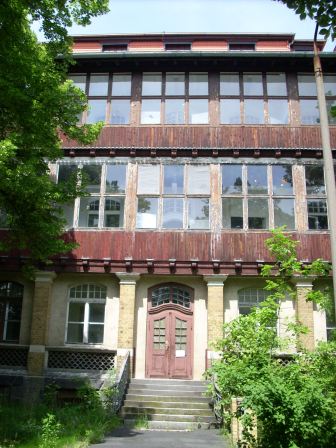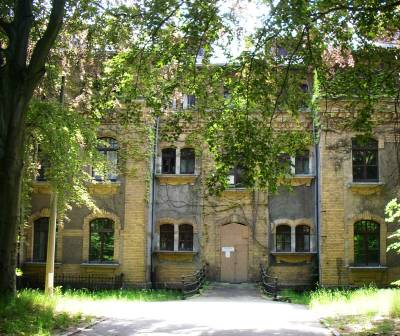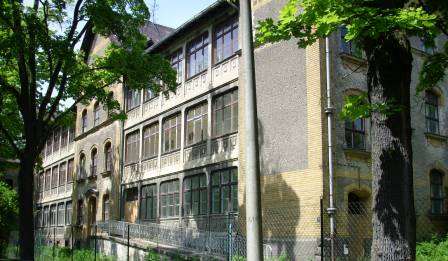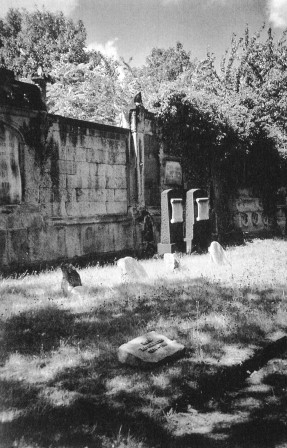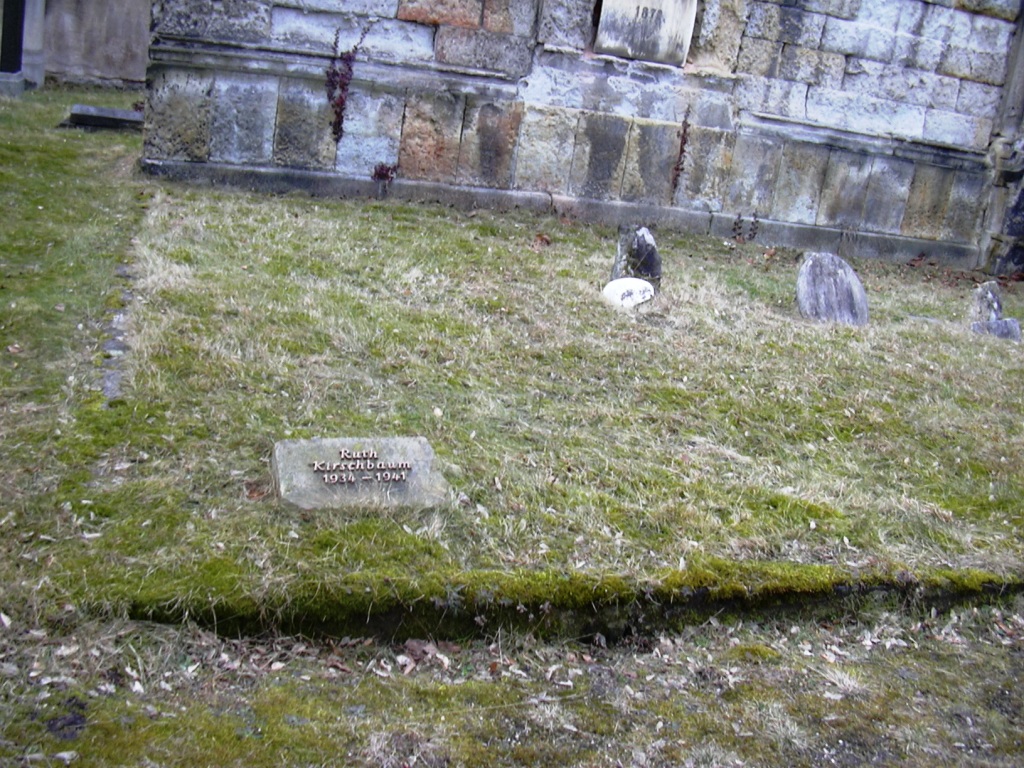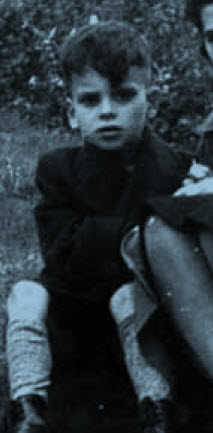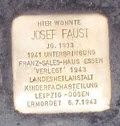Home
Leipzig-Dösen (Landes-, Heil- und Pflegeanstalt
Leipzig-Dösen)
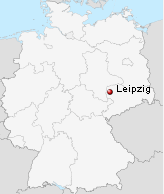
The Kinderfachabteilung in Leipzig-Dösen was established in October
1940 as the forth one overall and the first in what today is the state of
Saxony. It continued to operate until Dec. 1943, when its operations
were transferred to Grossschweidnitz. The reason for the transfer appears to
have been the bombing of the city, including the university children's
clinic (see Kinderfachabteilung Leipzig),
which necessitated the transfer of patients from there to Leipzig-Dösen and
likely did not leave enough space for the continued operation of the
Kinderfachabteilung.
The clinic's deputy medical director was Dr. Emil Eichler (he retired at the
age of 68 in 1943). The physician responsible for the "special
children's ward" was Dr. Arthur Mittag, who subsequently became responsible
for the ward at Grossschweidnitz and who committed suicide in 1946
while in detention awaiting trial. Dr. Eichler had charges brought against
him in the Dresden doctors' trial in 1947, but the court found him unfit to
stand trial on the first day.
It was believed that 505 children died in the special children's ward
in Leipzig-Dösen, of whom about 300 were identified by the clinic's
former economic director. According to Th. Seyde, the latest figure for the
number of children who were admitted to the clinic is 827, of whom 551 died
(see here) - one of the
largest numbers of victims in the special children's wards.
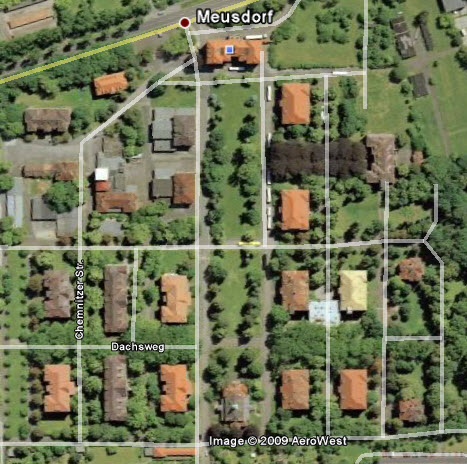
Source: author
The site of the clinic became the Parkkrankenhaus and is largely abandoned
today (it is in the suburb of Meusdorf), with the occasional use of films
that are short there for its historical ambience.
ö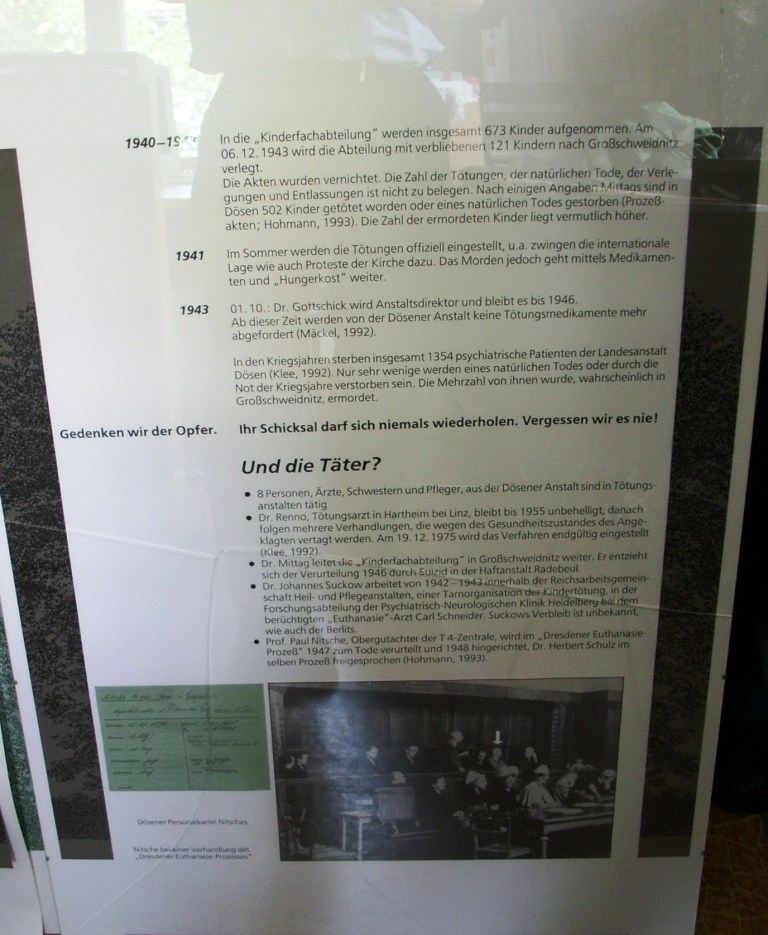
|
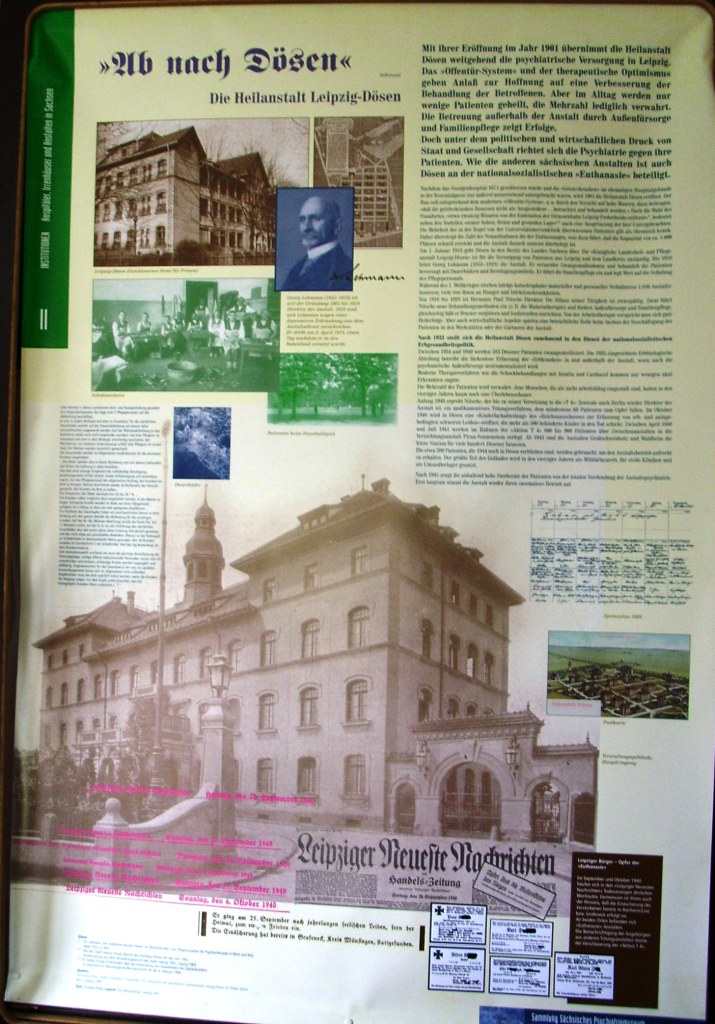
|
|
Source: author; Psychiatriemuseum Sachsen
In 1993, an internal pamphlet published on a small museum exhibit on site
still did not refer to "euthanasia crimes" (see Seyde, in Lahm et. al, p.
120 n. 6), but by 1995, as noted by Christiane Roick in her dissertation (p.
2), the exhibit contained references to "euthanasia." It was Th. Seyde who
had initiated the changes. Subsequently, parts of the exhibit on Dösen
were incorporated into an exhibit housed at the Saxon Museum of Psychiatry (here-
see "Ab nach Dösen").
Source: Lahm et al., p. 113; Israelitische Religionsgemeinde zu
Leipzig
After Th. Seyde produced a first list of
children who had died at Leipzig in the late 1990s, based on the so-called
"Römer list," in 2001 a grave memorial was created for a Jewish victim of
children's euthanasia at the Alter Israelitischer Friedhof in Leipzig. A
girl, Ruth Kirschbaum, was murdered at Leipzig-Dösen at age 7 in 1941. (Her
name has been identified to the public on websites of the City of Leipzig;
see here.) A second Jewish victim, Elfriede Thieberg, also
has a grave memorial dedicated to her in the same cemetery. Their fate has
been addressed by J. Nitsche (2010) as well as in paper on Jewish children
with disabilities and Nazi "euthanasia" crimes (Kaelber 2013, here).
Source: van der Locht 2010, p. 229; Sankt-Petrus Gemeinde
Bonn; author
Another child who is known to have been murdered there is Josef Faust. He
was transported from the Franz Sales home in Essen to Leipzig-Dösen on 11
May 1943, along with 29 other children. As described by the historian Volker
van der Locht, by August of that year 13 of those children had died, Josef
among them (van der Locht 2001: 226-31). A stumbling block (Stolperstein)
was placed for him in Bonn at the site of his family's residence on 10 April
1943, and a gravestone was place for him in Leipzig's Ostfriedhof in 2013.
His nephew Ulrich Dehe had researched his history.
MDR TV has a program entitled "Die vergessenen Kinder von Leipzig" (The
forgotten children of Leipzig) on this subject shown in August 2013 (https://www.youtube.com/watch?v=9cT_rOZt7sw).
It includes statements made by a former nurse at the facility who refers to
the minors in her care as "material" and incapable of being educated -
echoing terminology used in the Nazi period. She denies having known about
the murders and having had to follow physicians' orders. In 2014, the film
"Der Blinde Fleck" (Blind Spot) addressed the topic further.
For the further history of commemoration of victims in Leipzig, see
Kinderfachabteilung Leipzig.
For the 2007 exhibit, which also covers this special children's ward, see
exhibits.
A city memorial book for citizens in Leipzig who fell victim to the Nazi
rule (Gedenk- und Totenbuch der Leipziger Opfer der nationalsozialistischen
Gewaltherrschaft von 1933 bis 1945) was made available online on 27 January
2010 (here).
It contains the names of child victims at Leipzig-Dösen but not of the
Leipziger university children's clinic, as no records of the latter are
extant.
Research has shown that the facility Leipzig-Dösen collaborated with the
Kaiser Wilhelm Institute for Brain Research in Berlin-Buch. Dr. Georg
Friedrich, at the military special section of the KWI since August 1939 and
head of pathology at Leipzig-Dösen since 1936, examined the brains of the
children and worked together with the KWI's Julius Hallervorden.
The live of the child victim Wolfgang Firme has been chronicled by his
brother (Firme and Wohlfeld 2011), who also describe the similar fate of the
victim Ingeborg W.
In 2014, the project group "Initiative 551 plus" of disabled Leipzig
citizens has advocated the installation of a "Stolperschwelle" (stumbling
threshold) at the facility (see here,
and here).
The humanities scholar Ulrich Rottleb plans on writing his dissertation on
the topic "Children's Euthanasia in Saxony" at Berlin's Humboldt University.
Literature
Benzenhöfer, Udo. 2003a. "Genese und Struktur der
'NS-Kinder- und Jugendlicheneuthanasie.'" Monatsschrift
für Kinderheilkunde 151: 1012-1019.
———. 2003b. "Hans Heinze: Kinder und Jugendpsychiatrie und 'Euthanasie.'"
Pp. 9-52 in Beiträge zur
NS-"Euthanasie"-Forschung 2002, edited by the Arbeitskreis zur
Erforschung der nationalsozialistischen "Euthanasie" und
Zwangssterilisation. Münster: Klemm und
Oehlschläger.
Buhl, Christoph. 2001. "Von der Eugenik zur Euthanasie: Eine Spurensuche in
Leipzig." Master's Thesis, Fachbereich Sozialwesen der Hochschule für
Technik, Wirtschaft und Kultur Leipzig. Here.
"Eene meene muh - und raus bist du: Kindereuthanasie in Leibzig: Eine
Erinnerung: Schüler auf der Suche nach verblassten Spuren." Available at http://www.leipzig.de/imperia/md/content/51_jugendamt/fachstelle/kindereuthanasie_in_leipzig.pdf.
Firme, Horst, and Udo Wohlfeld. 2011. Ein
Leben für vier Jahre: Euthanasiemord an einem Kind. Apolda:
Eigenverlag Verein Prager Haus Apolda e.V.
Kaelber, Lutz. 2010. "Virtual Traumascapes: The Commemoration of Nazi
‘Children’s Euthanasia’ Online and On Site." Digital
Icons: Studies in Russian, Eurasian, and Central European New Media
4: 13-44. Available at http://www.digitalicons.org/issue04/files/2010/11/Kaelber-4.2.pdf.
———. 2013. "Jewish Children with Disabilities and Nazi 'Euthanasia' Crimes."
Bulletin of the Carolyn and Leonard Miller
Center for Holocaust Studies 17. Available at http://www.uvm.edu/~uvmchs/documents/bull-2013.pdf
Lahm, Berit, Thomas Seyde, and Eberhard Ulm, eds. 2008. 505:
Kindereuthanasieverbrechen in Leipzig. Leipzig: Plöttner Verlag.
Nitsche, Jürgen. 2010. "'Unter einem doppelten Fluch': Jüdische Opfer der
nationalsozialistischen Krankenmordaktion in Sachsen." Sonnenstein
Hefte 8: 47-78.
Roick, Christiane. 1997. "Heilen, Verwahren, Vernichten: Die Geschichte der
Sächsischen Landesanstalt Leipzig-Dösen im Dritten Reich." M.D. Diss.,
Medical College University of Leipzig.
Schmuhl, Hans-Werner. 2000. "Hirnforschung und Krankenmord: Das Kaiser
Wilhelm Institut für Hirnforschung, 1937-1945." Available at http://www.mpiwg-berlin.mpg.de/KWG/Ergebnisse/Ergebnisse1.pdf
Stadt Leipzig, Dezernat für Schule, Jugend, Soziales und Gesundheit. 2007.
"Euthanasieverbrechen in der Zeit des Nationalsozialismus in Leipzig."
Available at http://www.leipzig.de/imperia/md/content/53_gesundheitsamt/ozialpsychiatrischerdienst/euthanasieverbrechen_schulinfo-neu.pdf.
Topp, Sascha. 2004. “Der ‘Reichsausschuss zur wissenschaftlichen Erfassung
erb- und anlagebedingter schwerer Leiden’: Zur Organisation der Ermordung
minderjähriger Kranker im Nationalsozialismus 1939-1945.” Pp. 17-54 in Kinder
in der NS-Psychiatrie, edited by Thomas Beddies and Kristina Hübener.
Berlin-Brandenburg: Be.bra Wissenschaft.
———. 2005. "Der 'Reichsausschuß zur wissenschaftlichen
Erfassung erb- und anlagebedingter schwerer Leiden': Die Ermordung
minderjähriger Kranker im Nationalsozialismus 1939-1945." Master's Thesis
in History, University of Berlin.
van der Locht, Volker. 2010. "Zwangssterilisation und
Euthanasie in Essen." Pp. 153-253 in Beiträge
zur Geschichte von Stadt und Stift Essen, vol. 123. Essen:
Klartext. Available at http://euthanasiegeschaedigte-zwangssterilisierte.de/essener-beitraege-123--van-der-locht.pdf
Last updated March 13, 2015
